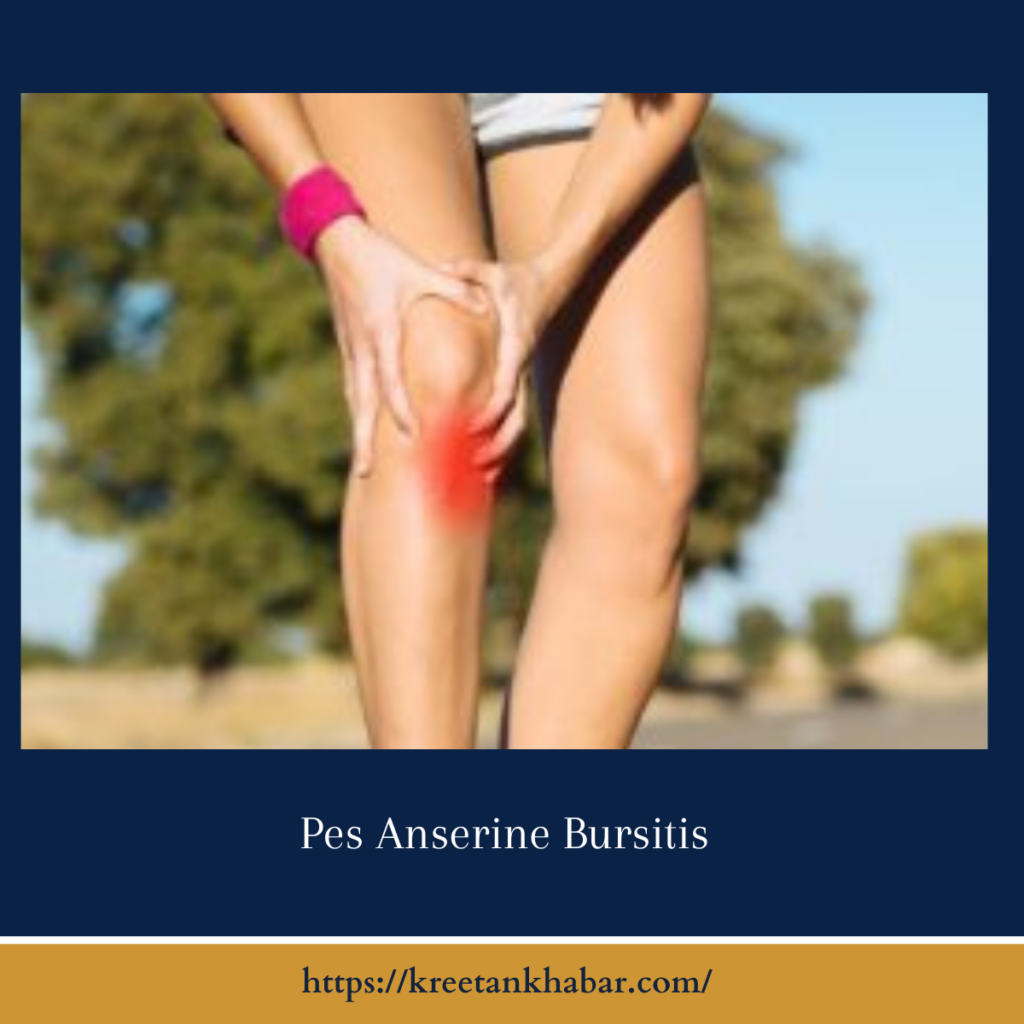Pes Anserine Bursitis: Causes, Symptoms, and Treatment
Pes Anserine Bursitis, though its name may sound perplexing, is a relatively common condition that affects the knee. Often overlooked or mistaken for other knee problems, understanding its causes, symptoms, and treatment options is essential for effective management and recovery.

What is Pes Anserine Bursitis?
Pes Anserine Bursitis refers to the inflammation of the pes anserine bursa, a small, fluid-filled sac located between the shinbone (tibia) and the three tendons of the hamstring muscles. These tendons are called the gracilis, sartorius, and semitendinosus tendons. The pes anserine bursa serves as a cushion, reducing friction and allowing smooth movement of the tendons over the bone.
Causes of Pes Anserine Bursitis:
Several factors can contribute to the development of Pes Anserine Bursitis:
- Overuse or Repetitive Stress: Activities that involve repetitive bending of the knee, such as running, cycling, or climbing stairs, can irritate the bursa and lead to inflammation.
- Obesity: Excess body weight puts increased pressure on the knees, which can strain the bursa and contribute to inflammation.
- Muscle Imbalances: Weakness or tightness in the muscles surrounding the knee, particularly the hamstrings and quadriceps, can alter biomechanics and lead to bursitis.
- Joint Diseases: Conditions like osteoarthritis or rheumatoid arthritis can affect the knee joint, increasing the risk of bursitis.
- Direct Trauma: Injury or trauma to the knee, such as a fall or blow, can cause inflammation of the bursa.
Symptoms of Pes Anserine Bursitis:
Pes Anserine Bursitis can manifest with various symptoms, including:
- Pain on the inner side of the knee, just below the joint.
- Swelling and tenderness over the pes anserine bursa.
- Pain worsens with activities like climbing stairs, running, or prolonged sitting with the knees bent.
- Limited range of motion in the knee joint.
Diagnosing Pes Anserine Bursitis:
Diagnosing Pes Anserine Bursitis typically involves a thorough physical examination by a healthcare professional. Your doctor may also order imaging tests such as X-rays, MRI, or ultrasound to rule out other potential causes of knee pain and to assess the extent of inflammation.
Treatment Options:
When it comes to treating Pes Anserine Bursitis, there’s no one-size-fits-all approach. Instead, healthcare providers often employ a multifaceted strategy tailored to the individual needs and severity of the condition. One of the primary considerations is rest and activity modification, allowing the affected knee time to heal and avoiding activities that exacerbate symptoms. Ice therapy can provide relief by reducing pain and inflammation, while over-the-counter or prescribed medications such as nonsteroidal anti-inflammatory drugs (NSAIDs) may be used to alleviate discomfort.
Physical therapy plays a crucial role in rehabilitation, with targeted exercises aimed at strengthening and stretching the muscles surrounding the knee, improving biomechanics, and reducing strain on the bursa. In cases of persistent or severe symptoms, corticosteroid injections directly into the bursa can offer significant relief by reducing inflammation. Weight management is also emphasized, particularly for individuals who are overweight or obese, as excess body weight can exacerbate symptoms by placing added stress on the knee joint. In rare instances where conservative measures fail to provide relief, surgical intervention may be considered, although this is typically reserved for extreme cases. Overall, the treatment of Pes Anserine Bursitis is focused on alleviating pain, reducing inflammation, and addressing underlying factors to promote healing and restore optimal function to the knee joint.
Treatment for Pes Anserine Bursitis aims to alleviate pain, reduce inflammation, and address any underlying causes. Here are some common approaches:
- Rest and Activity Modification: Avoid activities that exacerbate symptoms and allow sufficient rest for the knee to heal.
- Ice Therapy: Applying ice packs to the affected area can help reduce pain and inflammation.
- Medications: Nonsteroidal anti-inflammatory drugs (NSAIDs) like ibuprofen or naproxen may be prescribed to relieve pain and swelling.
- Physical Therapy: Targeted exercises to strengthen and stretch the muscles around the knee can improve biomechanics and reduce strain on the bursa.
- Corticosteroid Injections: In severe cases, your doctor may recommend injecting corticosteroids directly into the bursa to reduce inflammation and alleviate symptoms.
- Weight Management: For individuals who are overweight or obese, losing weight can help alleviate pressure on the knees and reduce the risk of recurrence.
- Surgery: In rare cases where conservative measures fail to provide relief, surgical removal of the inflamed bursa (bursectomy) may be considered.
Conclusion:
Pes Anserine Bursitis, though painful and inconvenient, is a treatable condition with the right approach. By understanding its causes, recognizing the symptoms, and seeking appropriate medical care, individuals can effectively manage the condition and return to their normal activities with minimal discomfort. If you’re experiencing persistent knee pain or discomfort, consult with a healthcare professional for an accurate diagnosis and personalized treatment plan. Remember, early intervention is key to successful recovery and long-term joint health.
Read also : Exploring the Delightful Boost of the Green Tea Shot 2023